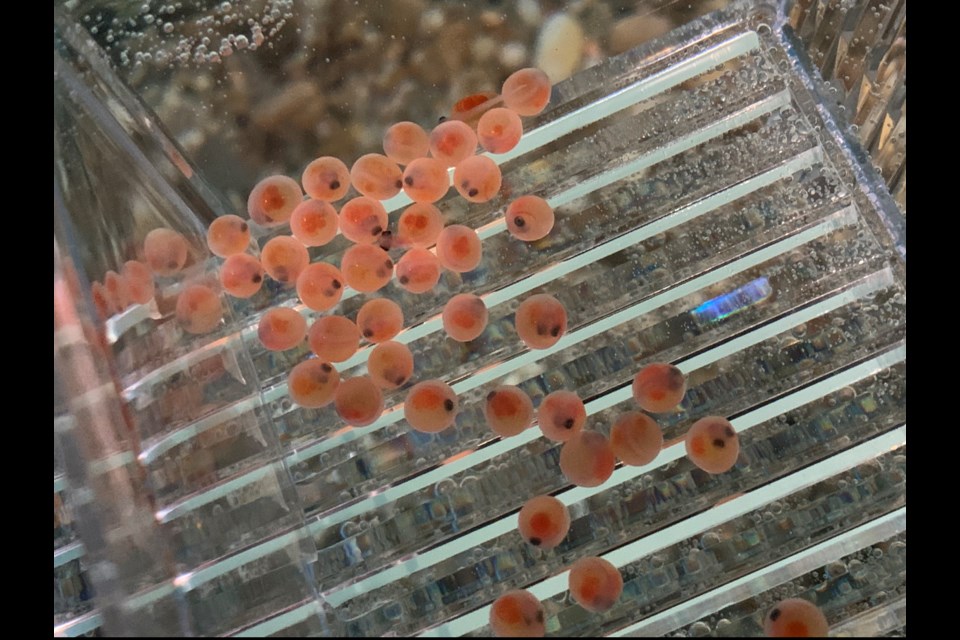Elementary students at three local schools are once again experiencing the fascinating process of hatching trout in their own aquariums, thanks to the Moose Jaw Wildlife Federation’s annual educational conservation project.
The Fish in Schools program is an annual project organized by the Wildlife Federation, in partnership with the Fish and Wildlife Development Fund and local schools interested in the hands-on learning experience.
This year, the MJWF’s program has provided hatchery kits and fish eggs to École Ducharme and William Grayson School in Moose Jaw, as well as Mortlach School outside the city.
MJWF president Todd Smith said that all three schools have been doing very well with hatching their trout successfully, which always means more excitement from the students.
“The kids really look forward to it. We have our tank here at École Ducharme in the lobby so all the classes have access to it and check it out every day, to watch the fish grow,” said Smith.
The Fish in Schools program sources its egg kits from the Fort Qu’Appelle Fish Culture Station in Echo Lake. The hatchery kits usually contain about one hundred fertilized eggs and arrive in mid-January, and every year, the new hatchling trout are released into the trout pond in Buffalo Pound Lake around May.
This means students are responsible for taking care of their fishy companions until late spring, watching them progress from the eyed egg stage and through the developmental process until they are free-swimming fish.
“The kids get to watch them go from the eyed eggs up to the alevin stage, [where the eggs sacs are still attached] and then up to the fingerling stage,” said Smith. “The highlight of the day [at École Ducharme] is usually feeding time, they kind of attack like little piranhas now that they’re at this stage and they’re growing very, very quickly.”
The program is always a hit with classrooms, said Smith, who is also the teacher administering the program at École Ducharme. As an educational tool, the program is unique and offers a new way for students to learn about biology, environmental factors and conservation, all at once.
Hatching their own aquarium of fish teaches students about hatch rates and the factors that affect them, as well as allowing students to practice data collection and analysis. It even gives students the chance to run tests on the aquatic environment for things like water quality, oxygen levels, ammonium nitrate content and more.
“They get to experience and see how this actually works, rather than just reading in textbooks or watching videos [and] they’re actually able to interact with living trout,” said Smith.
It’s also a great opportunity to teach kids about conservation and natural resources, said Smith, and pique their interest in the ways the Wildlife Federation works to protect the local ecosystems — especially since students know their classroom guests find a new home in Buffalo Pound.
Because the Fish in Schools program takes place each year with a rotating set of host schools, Smith encourages interested teachers to contact the MJWF if they’d like to take part in next year’s program.
More information about the Moose Jaw Wildlife Federation can be found online at mjwildlife.ca, and updates on the local branch are shared on the organization’s Facebook page.




